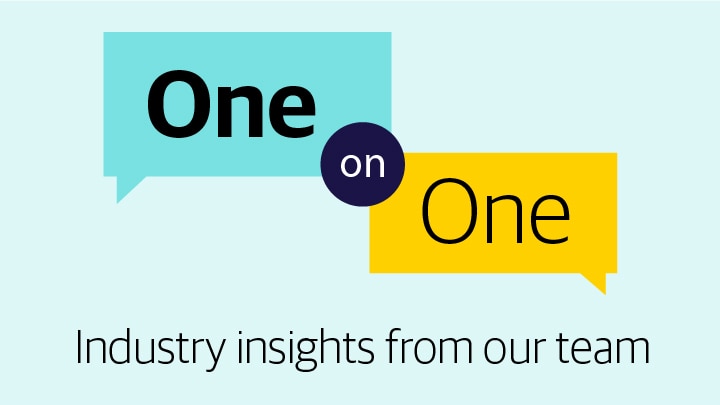
David Perez, chief underwriting officer of Liberty Mutual Insurance’s Global Risk Solutions (GRS) division, predicts what’s next for the property and casualty industry’s largest product lines and outlines how businesses can respond.
1. Workers compensation (WC) rates to trend up as businesses reopen and ramp up operations
Unemployment rates have gone from record lows to record highs in one dramatic swing. A temporary effect we are seeing is a reduction in claims – simply because there are fewer people at work. This has a significant potential to mask claim trends that will remanifest, Perez expects, once workers return. Three factors are likely to drive a future bump in WC claims:
- Returning employees may make more mistakes as they readapt to their work environments, which could result in more injuries.
- Businesses in some industries will hire relatively high numbers of new, untrained workers. Learning new processes and equipment will likely result in accidents and injuries.
- As employees return, we can expect an increase in claims from people who believe they have been exposed to COVID-19 at work. These upticks will be more likely in certain industries, such as manufacturing, where the workspace and type of work make social distancing and continuous cleaning more challenging.
Some states, such as California and Illinois, are enacting COVID-19 presumption laws, either through legislation or executive order, that provide WC benefits to employees who contract the virus while on the job. These regulations, which apply to different classes of workers depending on the state, will likely result in an increase in compensable WC claims.
Compounding the potential increase in coronavirus-related WC claims is the consistently high medical bills for treatment. However, the most significant drivers of future rate increases will likely be the continued rise in medical cost inflation combined with a prolonged low interest rate environment. This dynamic could have a major impact on loss ratios and margin erosion.
How to respond:
- Focus mitigation efforts on understanding key areas of loss with your operations.
- Provide proper training and adequate personal protective equipment (PPE).
- Follow social distancing guidelines to the best extent possible.
2. General liability rates to remain on their current upward trajectory as claims frequency and severity continue to rise
Loss severity in general liability has been driven in large part by social inflation – the theory that societal and legal factors are prompting more lawsuits, larger settlements, and bigger class-action awards.
In addition, three related factors may also play a role:
- Greater attorney involvement in claims, which can lengthen the timeframe of claims and their severity
- Litigation financing, where investors fund plaintiff litigation in exchange for a share of potential settlements or verdicts
- The success of the plaintiffs’ bar in appealing to jurors’ emotions, which can result in juries sometimes setting the facts aside to do what they feel is right. The outcome often includes punishing the companies seen as offenders, resulting in large verdicts, which the jury believes sends a message to other potential wrongdoers.
From a frequency standpoint, while shelter-in-place orders and court closings have reduced the number of litigation claims in the short term, we will likely experience a surge of pandemic-related claims as economies reopen.
What is currently unknown is how the events over the last few months — COVID exposure, the economic downturn, the political climate, and recent unrest highlighting systemic inequality and abuse — will impact jury decisions.
Additionally, if there is a second wave of COVID-19, juries may have different views on what is “reasonable”; the duty of corporations to protect employees, customers, and the general public; and how to determine liability.
How to respond:
Talk to your broker and insurance provider to understand the specific types of liability risk you face and follow the Centers for Disease Control and Prevention COVID-19 guidelines on how to protect your operation. Be prepared to show solid evidence of your company’s risk control measures.
3. Carriers are likely to be more selective about the quality and type of commercial auto risk they cover – and rates will continue to be influenced by fleet type, use, and radius.
Commercial auto rates have been rising for some time – and the end is nowhere in sight. Why? “In short, rate increases haven’t kept up with loss trends,” Perez says. Pre-pandemic factors affecting the continued elevation of claim activity and expenses include:
- More cars on the road and more accidents
- More costly repairs for vehicles with advanced technology
- Distracted driving
- Legalized marijuana
At first glance, the massive reduction in drivers on the road during COVID-19 seemed to be a positive in terms of auto risk. But the lack of traffic has equated to a surge in excessive speeding and some drivers engaging in unsafe driving practices, which has led to an increase in high-speed accidents and fatalities.
The drop in claims frequency is temporary and will not have a significant positive impact on losses or pricing. As states reopen their economies and ease shelter-in-place requirements, claims frequency will likely increase.
How to respond:
Implement a fleet management program that prioritizes safety, leverages technology such as telematics to monitor driving behavior, incorporates processes to identify root causes of poor driving, and delivers effective action plans to address problem areas.
4. Expect a firm property market for the foreseeable future.
Even before COVID-19, property insurance was in the midst of a course correction as the costs of natural catastrophes and man-made disasters increase across the globe on a scale never before seen. Severe weather-related events have been increasing in frequency and severity for more than a decade and the forecasts for the 2020 Atlantic hurricane season project it will be “very active.”
Historical loss patterns do not reflect current activity and can’t be relied on to forecast future exposures accurately, which makes predicting potential loss costs more challenging. “We have to look at this as the new normal,” says Perez. “We have this exposure now that is vastly different in dollar amounts than in years gone by.”
How to respond:
Ensure you understand possible exposures and be realistic about the market’s appetite for those perils.
5. The umbrella market has been changing rapidly, putting pressure on premium budgets and capacity limits, and COVID-19 will likely prompt an increase in this trend.
Given the trends in the general liability and commercial auto lines, it should be no surprise to see umbrella programs moving in a similar direction. Additionally, Perez notes that it’s become much more common for the increasing severity of claims to trigger umbrella policies. This helps explain why premium increases for umbrella grew at a faster rate than many other lines.
How does COVID-19 factor in? The potential increased severity in certain lines, the potential upward shift in social inflation-driven outcomes, and the heightened exposure to employers’ liability claims in certain industries could ultimately drive a significant increase in frequency and severity into the umbrella and excess layers.
How to respond:
To help bolster your risk profile, concentrate on strong loss-control programs and business continuity/disaster recovery plans.
6. COVID-19 is expected to increase activity in certain specialty insurance lines, including directors and officers, event cancellation, medical malpractice, and trade credit.
Directors and officers: As the massive economic repercussions of the coronavirus pandemic continue to unfold, the management of businesses will no doubt be under the microscope. Investors and other stakeholders may seek support for claims that leadership should have been better prepared for this kind of calamity. This risk poses a serious exposure for directors and officers. There is ample space for social inflation to have an influence on this line, as well.
Event cancellation: Since the early stages of the pandemic, the insurance industry has indicated that event cancellation, or contingency, would be one of the most drastically affected lines. From conferences and concerts to sports, events across the world have been canceled to help mitigate the spread of the disease. It may be too soon to forecast all the consequences, as economies are reopening and the events industry won’t operate normally before mid-2021, but expect rates to increase dramatically.
Medical malpractice: Despite herculean efforts in caring for patients, healthcare providers — especially skilled nursing facility operators — may face a surge of medical malpractice suits. And while a “crisis” standard of care may apply, carriers will nonetheless defend claims in this line. With such significant exposure, many carriers are imposing restrictions, including sublimited coverage, COVID-19 exclusions, and broad pandemic exclusions.
Trade credit and political risk: This line will likely face significant claims activity as a result of the economic and financial impact of the pandemic. Unprecedented government interventions around the world (including state support for trade credit insurers to maintain risk limits) will have an impact on mitigating losses. However, the recessionary effect of the crisis and the uncertainty surrounding the potential for subsequent outbreaks will influence insurers’ risk appetite and capacity for certain regions, countries, and industry sectors. Expect reduced market capacity and/or higher prices in some jurisdictions for the industry sectors and countries most impacted by the crisis.
How to respond:
Now is the time to review your policies, as well as contracts and projects, carefully. Contact your broker to see if there are any coming changes you should be aware of. In addition, communicate openly with your stakeholders and investors and make them aware of all COVID-related changes, protocols, and protections your company is implementing.
7. The commercial surety market will harden, with higher rates and stricter underwriting terms for weaker credits and companies in highly affected industries.
There will be a significant increase in corporate defaults/bankruptcy filings versus the past few years. Severely impacted industries such as retail, travel, hospitality, and energy are experiencing rapidly declining revenues and rating agency downgrades, which are expected to lead to an increase in defaults in the coming quarters. More sureties will be raising rates to reflect higher risks and asking for collateral to help minimize exposure and losses. The pace of economic and capital market recovery will influence these changes.
How to respond:
All commercial bond forms should be checked for exclusions and limitations. Commercial risk managers of affected companies should be prepared for collateral and rate discussions.
8. Sureties will look more closely at how contractors are managing through the pandemic.
While private construction has been continuing, federal and state spending remain weak, resulting in decreased revenue and cash flow for contractors operating in that sector. Most sureties will be monitoring contractors for signs of profitability, impaired liquidity, and/or heavy bank debt for operational purposes. Contractors with those characteristics could see reduced surety credit or tightening of terms.
There will be a heightened focus on risk mitigation in areas such as equitable contract provisions and subcontractor risk management. Sureties will work closely with agents and contractors to ensure the best possible outcomes for customers.
How to respond:
Make sure you have a good understanding of your risk management issues, financial resource needs, potential challenges, upcoming work, and the impact of the gap in bid activity. General contractors and subcontractors are advised to scrutinize contracts closely for acceptable provisions.
Where do we go from here?
Work with your broker and insurer to understand and prioritize your risks, and make sure you fully understand what you’ve purchased. And if you feel your business’ approach to risk is better than the norm, be sure to promote it.
As always, communication is key. An open line of genuine and cooperative discussion between all parties is the best way to arrive at an optimal and functional plan. Insurance is, ultimately, a formula, and some events will be outside of the insurance equation. If you determine that those exposures require mitigation, look into specialty products that are available. And improving your plan based on lessons learned from the current environment will ensure that you are able to be better postured for the future.
Businesses that proactively address risk, control losses, and manage exposures will be best prepared for whatever market conditions lie ahead.
Related insights
This website is general in nature, and is provided as a courtesy to you. Information is accurate to the best of Liberty Mutual’s knowledge, but companies and individuals should not rely on it to prevent and mitigate all risks as an explanation of coverage or benefits under an insurance policy. Consult your professional advisor regarding your particular facts and circumstance. By citing external authorities or linking to other websites, Liberty Mutual is not endorsing them.



